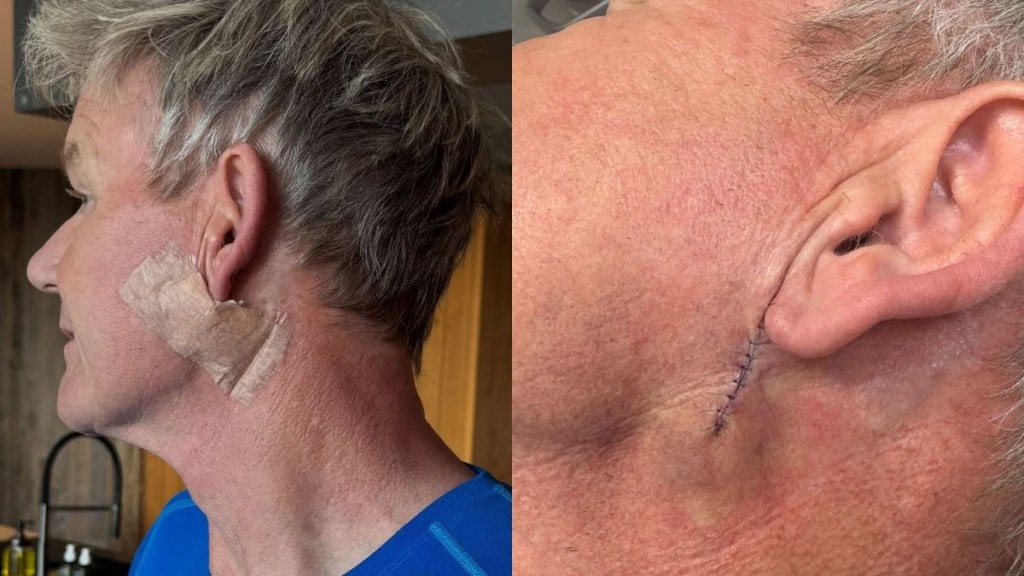Celebrity chef Gordon Ramsay, 58, has revealed that he recently underwent treatment to remove basal cell carcinoma (BCC), a common form of skin cancer. Taking to Instagram to share his experience, Ramsay expressed gratitude to the medical team at The Skin Associates for their swift and effective care. He also reminded fans about the importance of sun protection, joking that the bandages on his face were not due to cosmetic surgery.
“Grateful and so appreciative for the incredible team at The Skin Associates and their fast work on removing this basal cell carcinoma, thank you,” Ramsay wrote in his Instagram post. “Please don’t forget your sunscreen this weekend, I promise you it’s not a facelift. I’d need a refund,” he further added.
What is basal cell carcinoma?
Basal cell carcinoma is the most common type of skin cancer, making up for around 80 per cent of non-melanoma skin cancers. According to the National Institutes of Health (NIH), BCC mostly develops on sun-exposed skin, particularly on areas like the face, neck, and arms. It often appears as a small, shiny bump or a flat, scaly patch that may bleed or crust over. While it rarely spreads to other parts of the body, leaving it untreated can cause serious damage to the skin around it.
As per World Health Organization (WHO) skin cancers, including BCC, are among the most frequently diagnosed cancers globally, with millions of new cases each year. Early detection is critical, as treatment is simpler and more effective when the cancer is caught in its initial stages. The American Cancer Society estimates that over 4.3 million cases of BCC are diagnosed in the United States annually.
Symptoms and warning signs of basal cell carcinoma
Early signs of BCC can be subtle. As per Mayo Clinic, common symptoms include unusual lumps or growths on the skin, persistent open sores, areas of redness or irritation, changes in moles or birthmarks, and patches of skin that bleed or fail to heal. Anyone noticing these changes should seek medical attention promptly, as early intervention can prevent complications.
Prevention and sun protection is the key
Taking simple steps can help lower the risk of skin cancer. The American Cancer Society advises using a broad-spectrum sunscreen with SPF 30 or higher every day, even on cloudy days. As per the Skin Cancer Foundation, wearing protective clothing, such as long sleeves, wide-brimmed hats, and sunglasses, to block harmful UV rays. The Centers for Disease Control and Prevention (CDC) recommends wearing shade and avoiding direct sunlight during peak hours between 10 am and 4 pm. WHO warns against using tanning beds, as artificial UV exposure can increase the risk of skin cancer.
Who all are at risk?
BCC affects millions of people around the world. Those at higher risk include people with fair skin, a history of heavy sun exposure, a family history of skin cancer, or previous skin cancer diagnoses, according to the American Cancer Society and Mayo Clinic. The Centers for Disease Control and Prevention (CDC) explains that skin cancer rates are rising globally, due to increased exposure to UV rays and better detection methods.
According to the American Cancer Society, timely identification of skin changes and medical intervention can prevent serious complications and improve chances of survival.

